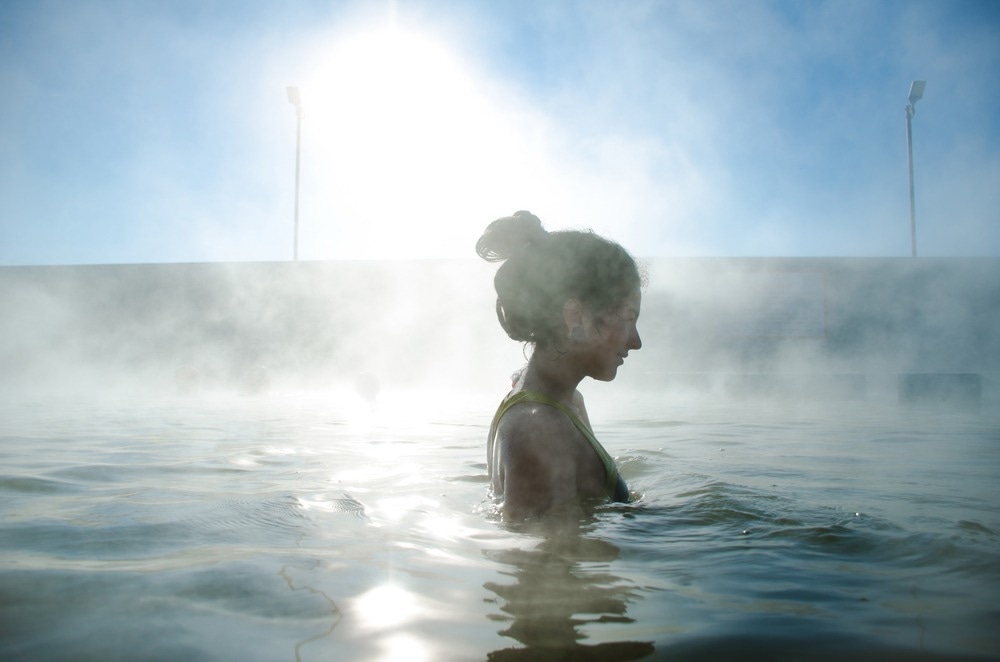In a recent study published in Scientific Reports, researchers evaluated the health benefits of sulfur balneotherapy (sulfur baths) on the rheological properties of the blood of osteoarthritis (OA) patients.
 Study: The effect of sulfur baths on hemorheological properties of blood in patients with osteoarthritis. Image Credit: TanyaZhe/Shutterstock.com
Study: The effect of sulfur baths on hemorheological properties of blood in patients with osteoarthritis. Image Credit: TanyaZhe/Shutterstock.com
Background
OA is a common condition characterized by inflammation and joint pain that can reduce functionality and mobility. Despite the high prevalence of OA, effective therapies are lacking. Sulfur bathing is known to heal ailments and has been proven effective in managing various diseases, especially musculoskeletal disorders. However, the therapeutic role of sulfur bathing in osteoarthritis, concerning the hemorheological indices, has not been extensively investigated.
Previous studies have reported that sulfur bathing lowers pain, tonicity, and swelling in the joints, especially those that result from increased sodium excretion. Balneotherapy can stimulate diuretic mechanisms in the kidneys and improve joint mobility. In addition, the therapy can improve kinematics and gait efficiency.
About the study
In the present study, researchers investigated the probable therapeutic benefits of sulfur bathing among osteoarthritis patients.
The study included 48 OA patients, 24 males and 24 females, aged 60.0 to 80.0 years, who were divided into two groups, i.e., the intervention group (n=35) and the control group (n=13). The intervention group comprised 18 male and 17 female participants who bathed in sulfur water daily during their three-week stay at the Solec Zdrój Health Resort (SZHR) in Poland.
The control group comprised six male and seven female participants who did not practice sulfur bathing. Blood was drawn from all participants twice, pre-and post-intervention. All participants underwent standardized physiotherapy comprising massage, kinesiotherapy, laser, and manual therapy. Data were obtained on participant age, sex, and comorbidities such as acute infections, diabetes mellitus, neoplasms, rheumatological disorders, smoking, spondylolisthesis, and urinary incontinence.
Individuals with rheumatologic disorders, active infections, neoplasms, and smoking habits were excluded from the analysis. The team evaluated morphological, biochemical, coagulation, and rheological alterations in the blood. Morphological parameters such as complete blood counts (CBC), white blood cell (WBC) counts, red blood cell (RBC) counts, hemoglobin (HGB), hematocrit (HCT), mean corpuscular volume (MCV), mean corpuscular HGB (MCH), mean corpuscular HGB concentration (MCHC), platelet concentration (PLT), platelet distribution width (PDW), differential leukocyte counts were investigated.
Biochemical and coagulation parameters included high-sensitivity-C reactive protein (hs-CRP), fibrinogen, international normalized ratio (INR), prothrombin time (PT), and activated partial thromboplastin time (APTT). Rheological parameters included erythrocyte aggregation amplitude (AMP), half-time for total red blood cell aggregation (T1/2), aggregation index (AI), and elongation index (EI).
Results and discussion
The average age of the study participants was 67.0 years. Following sulfur balneotherapy, white blood cell counts, particularly neutrophil counts, were significantly reduced in the intervention group, indicating that balneotherapy can positively impact chronic low-grade inflammation. Erythrocyte elongation indices, which ascertain erythrocyte length alterations relative to width when stretched, were significantly greater following balneotherapy in shear stresses such as 8.20, 16, 31, and 60 Pa.
Hemoglobin levels, mean corpuscular hemoglobin (MCH), mean platelet volume (MPV), and neutrophil concentration (NEU) were significantly altered following balneotherapy. On the contrary, the levels of biochemical and coagulation parameters, including hs-CRP and fibrinogen, did not significantly differ from baseline values. The time required for a half-maximal change in the aggregation signal (T1/2) was significantly greater following the intervention.
On the contrary, balneotherapy significantly reduced the degree of erythrocyte aggregation assessed using the aggregation index (AI). The significant decrease in hemoglobin counts might be relative due to increased thirstiness following bathing in sulfur water, which could lead to overhydration, blood pressure fluctuations, and tachycardia.
The precise mechanisms by which sulfur influences hemorheological variables are unknown. However, studies have reported that hydrogen sulfide (H2S) possesses antioxidant properties since H2S can quench free radicals such as reactive oxygen species (ROS) that can remodel vasculature by damaging vascular cells, increasing inflammatory cell recruitment, and increasing lipid peroxidation. In addition, H2S can increase the secretion of antioxidants through nuclear factor erythroid 2-related factor 2 (NRF-2) activation.
The positive effects of sulfur on hemorheological parameters may also be linked to endothelial function and the release of nitric oxide, a potent vasodilator with anti-inflammatory effects. Nitric oxide secretion from the endothelial lining is regulated by the shear stress on the walls of blood vessels, ascertained based on the blood viscosity and flow in their peripheral regions.
Conclusion
Based on the study findings, sulfur bathing may improve erythrocyte deformability and aggregation parameters among individuals with osteoarthritis and lower neutrophil counts. However, the findings for RBC-related parameters may be underestimated since RBCs survive for 120 days, whereas the intervention period was three weeks. Further research must be conducted on the effects of sulfur bathing using similarly sized intervention and control groups and must include quality of life and functional evaluations.